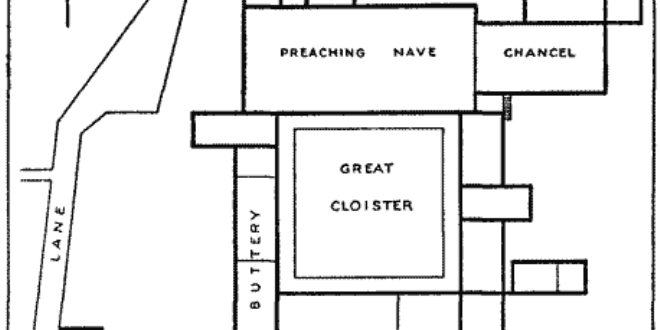2-8 February 1415: Council Meeting for the Defence of England and Revocation of a Letter of Protection
By Dan Spencer
At about this time there was a meeting at the London house of the Dominican friars (also known as Blackfriars) of the king’s council.
Councillors at the meeting included some of the closest advisors to the king, such as Henry Beaufort, Bishop of Winchester and Chancellor of England, Henry Chichely, Archbishop of Canterbury, Edward, Duke of York, Henry, Lord Scrope, and Sir Thomas Erpingham, Steward of the Royal Household.
The outcome of this gathering was a series of measures designed to protect England during the absence of the king on his expedition. This included the provision of two large ships of 120 tons, five barges of 100 tons (medium sized vessels) and five balingers (small vessels) for the safeguard of the sea. The large ships and barges were to each have a crew of forty-eight sailors, twenty-six men-at-arms and twenty-six archers, whereas the balingers were each to have forty sailors, ten men-at-arms and ten archers. The defence of the south coast, between Plymouth and the Isle of Wight, was to be guarded by the two large ships together with two barges and one balinger. East Anglia was to be protected by the provision of two barges and one balinger, whereas the north-east, between Orford and Berwick-upon-Tweed, was to be patrolled by the remaining barge and two balingers. These ships were most likely intended to carry out patrols to deter pirates.
Measures were also put in place to guard the most vulnerable parts of the realm, in Wales and the border with Scotland. Wales had recently been in a state of rebellion led by Owen Glendower, which the king, as Prince of Wales, had spent years fighting there. Fears of a new uprising in the principality meant that sixty men-at-arms and 120 archers were allocated for garrisons in North Wales, whereas forty men-at-arms and eighty archers were to be recruited for the defence of South Wales. A further one hundred men-arms and two hundred archers were to be assigned for the defence of the East March of Scotland in Berwick-upon-Tweed. For more information on Anglo-Scottish relations at this time click here. The Pale of Calais was also to be reinforced with an extra one hundred men-at-arms and two archers. Provision was also made for the payment of the wages of three men-at-arms and six hundred archers also serving in the territory. For more information on the Pale of Calais click here. Finally the council requested that a full report on the income and expenditure of the kingdom should be compiled. This was almost certainly linked to preparations for the forthcoming expedition.
Meanwhile in France, on 2 February, an English embassy was allowed to enter Paris. This embassy had been appointed on 5 December 1414 for the purpose of negotiating a peace treaty with France and a proposed marriage to Charles VI’s daughter, Catherine. On the same day, Charles attempted to resolve the conflict with John, Duke of Burgundy, by accepting him back into his grace.
On 6 February a letter of protection that had been granted to Robert Pyggeston, a grocer and citizen of London, on 18 December 1414 as victualler of Guínes Castle in the Pale of Calais was revoked. This was because the sheriffs of London certified that he was delayed in the city of London. It is possible that Pyggeston took out the letter in an attempt to avoid legal action, as it granted protection from prosecution whilst on overseas service.
This information came from Calendar of the Patent Rolls 1413-1416, p. 276; Ian Mortimer, 1415: Henry V’s Year of Glory (London: The Bodley Head, 2009), pp. 78-80, 87; Harris Nicolas, Proceedings and Ordinances of the Privy Council of England: Volume II. (London: Record Commission, 1834), pp. 145-8, available from https://archive.org/stream/proceedingsando02coungoog#page/n225/mode/2up; Anne Curry, Agincourt: A New History (Stroud: Tempus, 2005)
Plan of Blackfriars Monastery prior to the Dissolution of the Monasteries, taken from Wikipedia and is in the Public Domain

